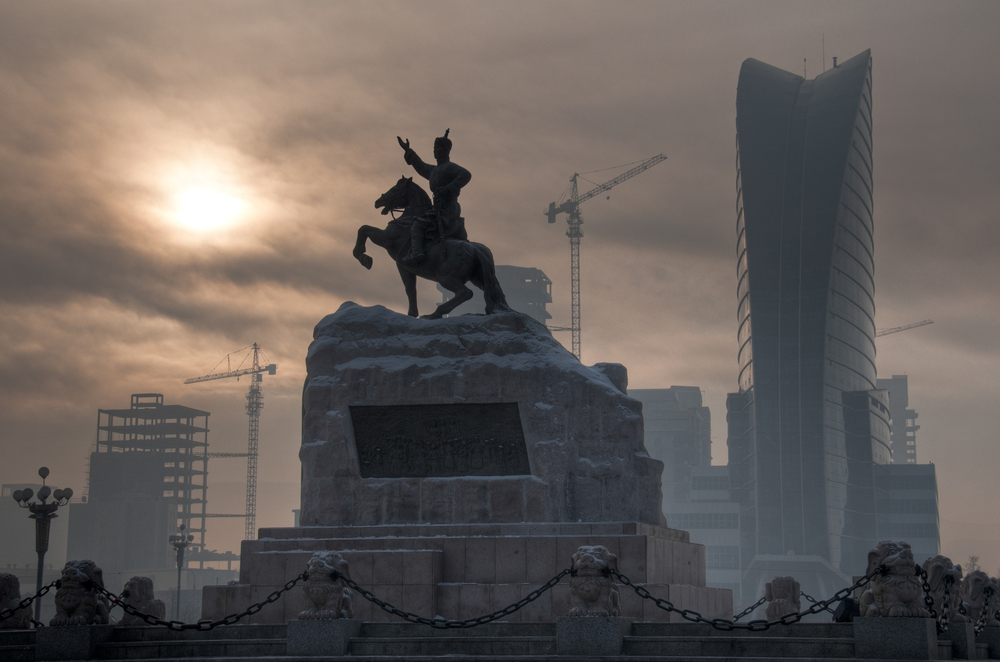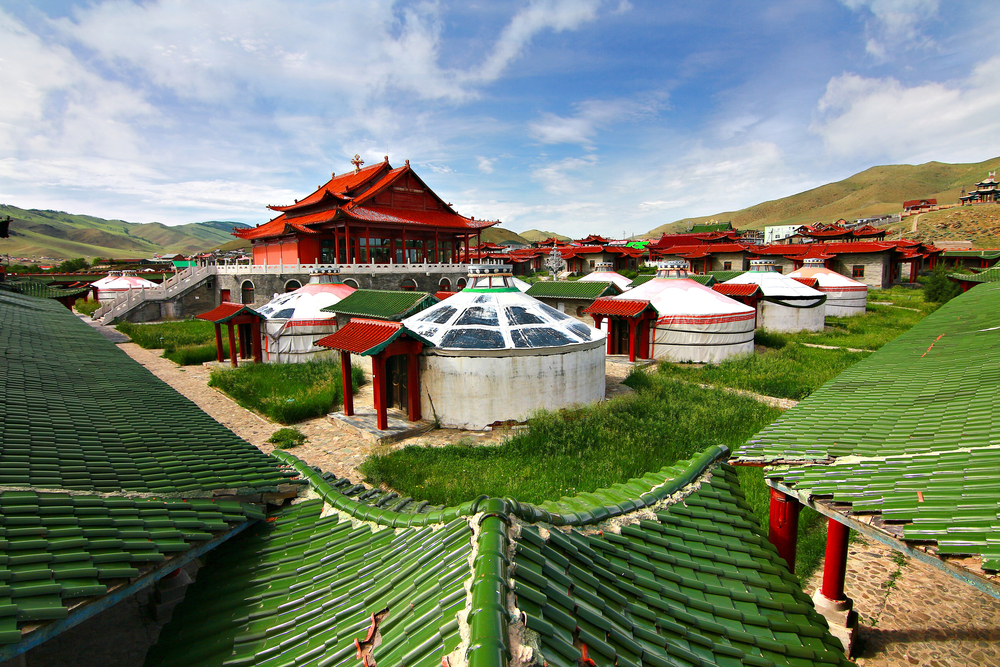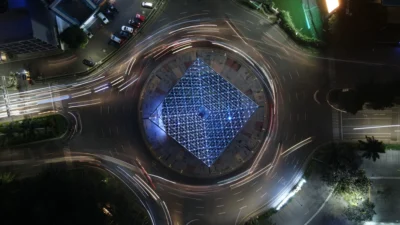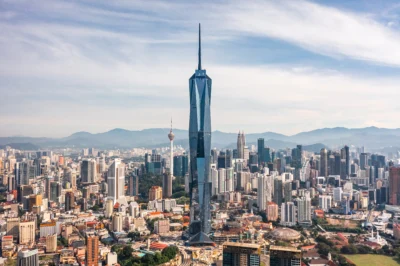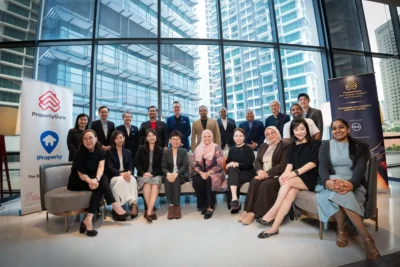Mongolia’s capital at a crossroads: Ulaanbaatar’s rapid growth sparks urban planning dilemmas
Ulaanbaatar’s housing boom has benefited developers and investors alike. But incoherent urban planning highlights deficiencies within this unprecedented growth
From the sprawling ger district that flanks the northern steppes above Ulaanbaatar, the juxtapositions of the city are writ large.
Cars and pedestrians commingle with livestock. Luxury retail stores pop up next to old statues of Genghis Khan. Soviet apartment buildings crumble while glistening glass towers launch skyward.
The Mongolian capital’s population has grown from half a million in the 1990s to roughly two million in 2022, accounting for 45 percent of the country’s population. Almost all these newcomers have moved from the vast countryside in search of job prospects and a brighter future.
The ongoing mining boom, meanwhile, continues to supercharge demand for office space and luxury apartments in Ulaanbaatar. Last year, Mongolia’s largest sector drove double-digit growth, with vast profits from coal making up a quarter of the country’s gross domestic product. The construction sector is also expected to expand by 5.2 percent in 2023.
“Over the decades I have lived and worked here, there have been plenty of positive strides in the market thanks to the city’s rapid growth,” says Lee Cashell, chairman and CEO of real estate investment firm Mongolian Properties.
The result is that Ulaanbaatar is currently witnessing one of the fastest urban transformations on the planet.
Almost overnight, towering skyscrapers are supplanting the traditional gers that have been Mongolians’ homes for centuries, driving property prices to unprecedented heights. According to official data, in April, the average cost per square metre of new housing reached MNT3.5 million (USD1,000), reflecting an almost 10 percent annual increase.
“Now, more than ever, with business flourishing, the market possesses substantial potential,” Cashell adds. “But within this growth lie certain deficiencies that require attention.”
The biggest challenge is undoing the damage caused by a lack of urban planning to incorporate newly developed areas. Unchecked development has resulted in significant traffic congestion, the depletion of green and communal areas, dangerous levels of air pollution—Ulaanbaatar is consistently shamed in global air quality indices—and overstrained infrastructure, including water supply and sewage systems.
“A recent heavy rainfall really showcased these shortcomings, with floods wreaking havoc in both the downtown core and the outskirts,” says Shinekhuu Tsengel, CEO of real estate agency Century 21 Mongolia. “It caused considerable damage to homes along the riverbanks.”
Another immediate concern is the huge task of upgrading housing for the million or so former nomads living in ger zones outside the city. Many of these settlements lack running water, gas, or transportation options. In fact, Tsengel points out that only half of the city’s existing housing stock meets modern standards.
“While some central and suburban areas have relatively good infrastructure, the ger district, which makes up 70 percent of Ulaanbaatar, is very poorly developed,” he says.
Certainly, most rapidly urbanising cities encounter teething problems in the early days. Strategic planning is often neglected in the gold rush as the private—and occasionally public—sectors look to cash in. Often, this exacerbates levels of inequality.
“Far too often,” Cashell says, “there is an inclination toward immediate gains, rather than a holistic approach towards the city’s future.”
There are some indications, however, that authorities are redressing the balance. In 2015, the then government promised to invest significantly in affordable housing and utilities.
The Ulaanbaatar 2020 Master Plan and Development Approaches for 2030 focused on improving ger areas. They planned to build new apartments and upgrade public housing.
Under the Development Approaches for 2030 plan, companies must now compete for approval from residents. To protect residents’ rights to housing and compensation, companies must get agreements from at least 70 percent of residents before going to city officials.
Indeed, most experts agree that community engagement, especially by developers, is essential in ensuring Ulaanbaatar can effectively accommodate those new residents who left their traditional ways of life in search of a better future.
“Developers should provide transparency about their projects, including environmental impact assessments and plans for community engagement, so policymakers can ensure they adhere to their commitments and obligations,” says Khaliunaa Battur, general director of construction and real estate firm Jiguur Grand Group.
“They should also be collaborating with the public sector on public awareness campaigns to educate residents about responsible development practices and the benefits of organised urban growth.”
Meanwhile, Cashell thinks authorities can learn from cities that have overcome limitations with eco-friendly initiatives. He highlights how community involvement helped plan efficient public transport, green buildings, and zoning in Singapore and Copenhagen. Singapore and Denmark incentivised developers to prioritise constructing green developments and community-oriented projects.
Above all else, however, Cashell and almost everyone involved in Ulaanbaatar’s haphazard real estate sector believe short-term answers lie closer to home.
“By quickly learning from past mistakes and valuing quality over quantity,” he says, “the city can thrive while maintaining its unique identity and vastly improving the lives of its residents.”
This article was originally published on asiarealestatesummit.com. Write to our editors at [email protected].
Recommended
6 reasons Bekasi is rising as Greater Jakarta’s next hotspot
One of Greater Jakarta’s rising stars is prospering, thanks to ample recreation and a contingent of desirable housing projects
6 developments driving Asia’s green real estate shift
Developers are being incentivised to push a green agenda into daring new realms
The Philippines’ LIMA Estate drives sustainable industrial growth
LIMA Estate models a citywide vision that uplifts workers while appealing to climate-conscious employers
Malaysia property market rebounds with foreign interest and growth
The nation’s property market is stirring to life, fuelled by foreign buyers and major infrastructure drives

